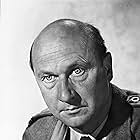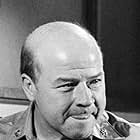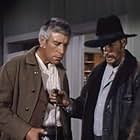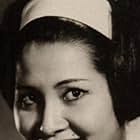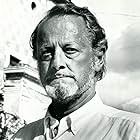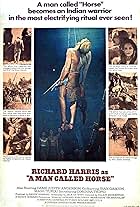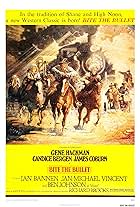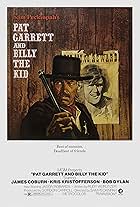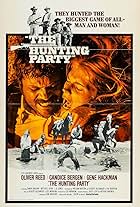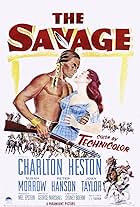IMDb RATING
6.9/10
6.6K
YOUR RATING
After a cavalry patrol is ambushed by the Cheyenne, the two survivors, a soldier and a woman, must reach the safety of the nearest fort.After a cavalry patrol is ambushed by the Cheyenne, the two survivors, a soldier and a woman, must reach the safety of the nearest fort.After a cavalry patrol is ambushed by the Cheyenne, the two survivors, a soldier and a woman, must reach the safety of the nearest fort.
Aurora Clavel
- Indian Woman
- (as Aurora Clavell)
Ralph Nelson
- Agent Long
- (as Alf Elson)
Marco Antonio Arzate
- Kiowa Warrior
- (uncredited)
Barbara De Hubp
- Mrs. Long
- (uncredited)
Ron Fletcher
- Lt. Mitchell
- (uncredited)
Alfredo Tarzan Gutiérrez
- Kiowa indian
- (uncredited)
Conrad Hool
- Lieutenant
- (uncredited)
- Director
- Writers
- All cast & crew
- Production, box office & more at IMDbPro
Storyline
Did you know
- TriviaOriginal work print of the movie was 135 minutes long. When it was test-screened to an audience, they almost started a riot after watching this version. This was the only time that the full uncut version was shown, and it caused the studio to decide that it was unreleasable unless massive cuts were made to the film's violent scenes. Some of these cut and never included in any official version scenes include shots of Indian women's breasts being sliced off and thrown around; children's limbs graphically severed (real amputees were employed for these shots); a little girl's legs cut off by wagon wheels; a soldier gleefully cutting an Indian's arms off before shooting another Cheyenne in the eye; the fate of Spotted Wolf, who is beheaded and his head is hoisted as a trophy by a soldier before he tosses it to another soldier, who then throws it off camera. Spotted Wolf's head attached to the stirrup of a cavalryman was not cut and is shown in the release print, and there are stills showing his mutilated body lying on the ground without the head and four cavalrymen running around with his severed head in their hands, howling and laughing while blood is spurting from the neck stump.
- GoofsThe voice-over at the end of the film describes the events we have just witnessed as taking place in 1864.However,earlier in the movie Honus tells Cresta that his father was killed at the battle of Little Bighorn which occurred in 1876.
- Quotes
Col. Iverson: When I see young people today behaving like that I just... I can't help wondering what this goddamn country's coming to.
- Alternate versionsThe movie was originally rated "R" by the MPAA. In 1974 a new version was rated "PG" which removed the most graphically violent parts from the massacre as well as a toned down rape scene, but the scene still contained full frontal nudity of a native woman.
- ConnectionsFeatured in JFK II: The Bush Connection (2003)
Featured review
Without question, in its unedited form, SOLDIER BLUE is one of the most upsetting and violent films of all times, perhaps even THE most violent. This remains so, even though the film was released way back in 1970. And up until late 2006, you could only see an uncut version of this film via imports. Lionsgate Video, however, has rectified this.
Basically a fictional re-enactment of the infamous 1864 Sand Creek massacre in Colorado by the U.S. Cavalry on a Cheyenne Indian village and the events that lead up to it, but actually based on Theodore V. Olsen's novel "Arrow In The Sun", SOLDIER BLUE, directed by Ralph Nelson (of CHARLY and LILIES OF THE FIELD fame), stars Candice Bergen and Peter Strauss as, respectively, a Cheyenne-raised white woman and a disenfranchised U.S. Cavalry officer who have survived a savage attack by Cheyenne Indians on an Army payroll wagon train and are forced to be together to survive, even as they disagree starkly on who is right in the white man-versus-Indian conflict. Eventually, of course, they start to fall in love. This gives a story that otherwise might be interpreted as an arguably pretentious attempt to link the Cavalry's atrocities of the past to the modern Army's behavior in Vietnam a certain amount of emotional validity. But it also leaves the viewer heavily unprepared for the incredibly horrific massacre that climaxes the film.
Even today, this massacre, a sequence of unbelievably extreme violence that involves hacked body parts, rape, and infinite bloodshed, makes SOLDIER BLUE very difficult for viewers to watch. In fact, when the film was re-released in 1974, much of that bloodshed was chopped off so the film could somehow get a 'PG' rating; it is that version that American viewers have had to put up with on video until late 2006. Apart from the brutal nature of that final sequence, the film's depiction of the Army as a bunch of bloodthirsty savages does not make SOLDIER BLUE an easy film to agree with--and contrary to what a previous reviewer said, I don't think it even comes close to being a politically correct movie. It may not be a masterpiece, the way THE WILD BUNCH or SAVING PRIVATE RYAN were (and they too were incredibly ferocious in terms of violence). But it's good that SOLDIER BLUE has finally made it to DVD in its original uncut form so that people can now judge its validity in whole, regardless of its politics or, even more, its enormously graphic finale. It is a film that HAS to be seen today.
Basically a fictional re-enactment of the infamous 1864 Sand Creek massacre in Colorado by the U.S. Cavalry on a Cheyenne Indian village and the events that lead up to it, but actually based on Theodore V. Olsen's novel "Arrow In The Sun", SOLDIER BLUE, directed by Ralph Nelson (of CHARLY and LILIES OF THE FIELD fame), stars Candice Bergen and Peter Strauss as, respectively, a Cheyenne-raised white woman and a disenfranchised U.S. Cavalry officer who have survived a savage attack by Cheyenne Indians on an Army payroll wagon train and are forced to be together to survive, even as they disagree starkly on who is right in the white man-versus-Indian conflict. Eventually, of course, they start to fall in love. This gives a story that otherwise might be interpreted as an arguably pretentious attempt to link the Cavalry's atrocities of the past to the modern Army's behavior in Vietnam a certain amount of emotional validity. But it also leaves the viewer heavily unprepared for the incredibly horrific massacre that climaxes the film.
Even today, this massacre, a sequence of unbelievably extreme violence that involves hacked body parts, rape, and infinite bloodshed, makes SOLDIER BLUE very difficult for viewers to watch. In fact, when the film was re-released in 1974, much of that bloodshed was chopped off so the film could somehow get a 'PG' rating; it is that version that American viewers have had to put up with on video until late 2006. Apart from the brutal nature of that final sequence, the film's depiction of the Army as a bunch of bloodthirsty savages does not make SOLDIER BLUE an easy film to agree with--and contrary to what a previous reviewer said, I don't think it even comes close to being a politically correct movie. It may not be a masterpiece, the way THE WILD BUNCH or SAVING PRIVATE RYAN were (and they too were incredibly ferocious in terms of violence). But it's good that SOLDIER BLUE has finally made it to DVD in its original uncut form so that people can now judge its validity in whole, regardless of its politics or, even more, its enormously graphic finale. It is a film that HAS to be seen today.
Details
- Release date
- Country of origin
- Language
- Also known as
- Das Wiegenlied vom Totschlag
- Filming locations
- Production companies
- See more company credits at IMDbPro
Box office
- Gross US & Canada
- $510,520
Contribute to this page
Suggest an edit or add missing content













